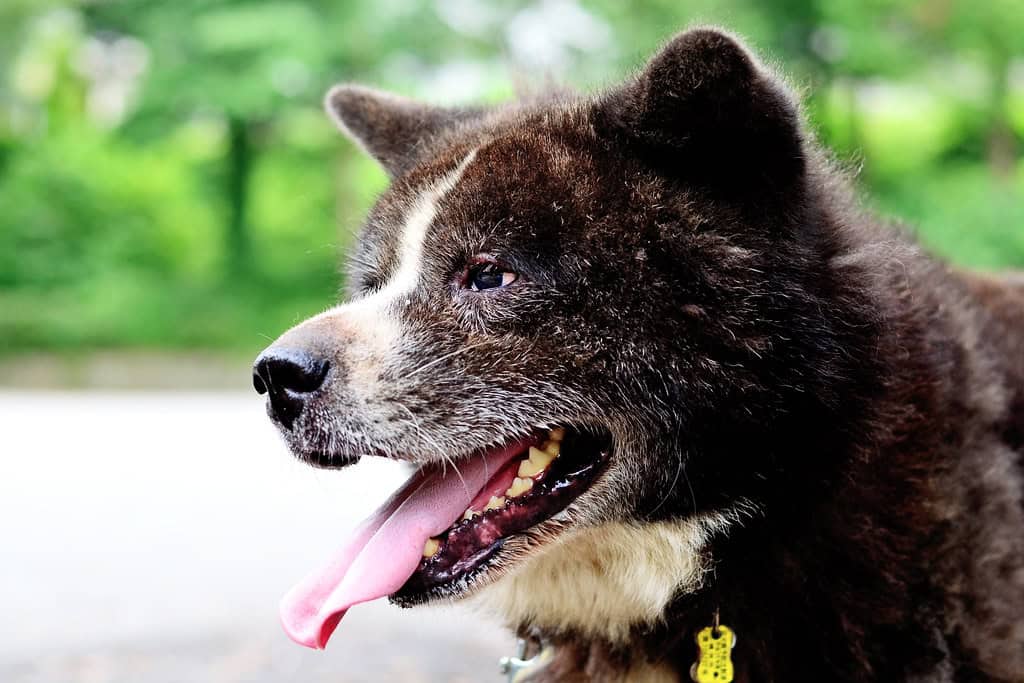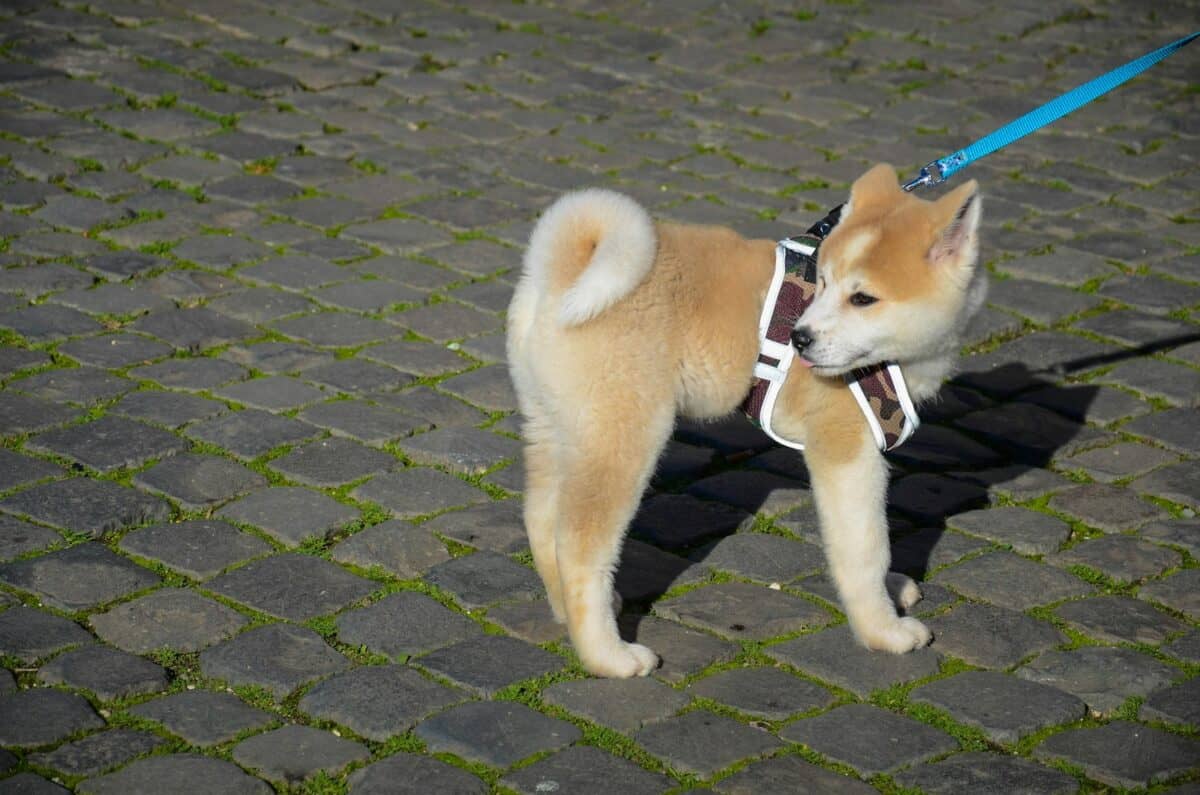In the bustling Shibuya district of Tokyo stands a bronze statue that draws visitors from around the world. Unlike monuments to generals or politicians, this statue commemorates a dog—an ordinary Akita named Hachiko whose extraordinary loyalty has transcended time, language, and culture. Nearly a century after his death, Hachiko’s story continues to resonate with millions, touching hearts across generations and geographical boundaries. His tale of unwavering devotion has been immortalized in books, films, and countless retellings, each iteration introducing new audiences to the faithful dog who waited.
What makes this particular dog’s story so universally moving? While animal loyalty is a common theme in folklore and personal anecdotes worldwide, Hachiko’s documented daily vigil for his deceased owner struck a chord that continues to reverberate through our collective consciousness. His story speaks to fundamental human values and emotional needs—loyalty, love, loss, and the profound connection between humans and animals—making it as relevant today as it was in 1930s Japan.
The Historical Facts Behind the Legend

Born in November 1923 in Akita Prefecture, Hachiko was adopted by Professor Hidesaburo Ueno, an agricultural scientist at Tokyo Imperial University. Their daily routine was simple but meaningful: each morning, Hachiko would accompany the professor to Shibuya Station, and each afternoon, he would return to meet his master’s train. This continued until May 21, 1925, when Professor Ueno suffered a cerebral hemorrhage while at work and passed away unexpectedly, never returning to the station where Hachiko waited.
For the next nine years, nine months, and fifteen days, Hachiko returned to Shibuya Station precisely when the evening train was due to arrive. Through snow, rain, and sweltering heat, he maintained his vigil, initially treated as a nuisance by station staff but eventually becoming a familiar and beloved presence. Hachiko continued his daily wait until his death on March 8, 1935. A postmortem examination revealed cancer and terminal heartworms—yet despite his physical suffering, his devotion never wavered. These documented facts, verified by numerous witnesses and contemporary news accounts, form the foundation of what would become a global phenomenon.
From Local News to National Symbol

Hachiko might have remained just another loyal dog, remembered only by those who knew him, if not for a chance encounter. In 1932, one of Professor Ueno’s former students, Hirokichi Saito, noticed the aging Akita at the station. As a Japanese dog expert, Saito recognized Hachiko as one of the few purebred Akitas remaining at a time when the breed was approaching extinction. Intrigued by the dog’s daily appearance, Saito followed Hachiko and learned his story from station staff and the Kobayashis, who had become the dog’s caretakers.
Moved by what he discovered, Saito published an article about Hachiko in Asahi Shimbun, one of Japan’s major newspapers. The story captured the national imagination almost overnight. In a period of increasing militarism and nationalism, Hachiko’s loyalty resonated with Japanese virtues of duty and devotion. He became a living symbol of “chu” (loyalty) and “ko” (filial piety)—traditional values that the government was eager to promote. School textbooks featured his story, and children were encouraged to emulate his faithful character. The first statue of Hachiko was erected in 1934 at Shibuya Station, with the dog himself present at the unveiling ceremony, elevating him from local curiosity to national icon.
Cultural Context: Why Japan Embraced Hachiko

To understand why Hachiko’s story resonated so deeply in Japan, one must consider the cultural and historical context of 1930s Japanese society. The country was experiencing rapid modernization and Westernization while simultaneously witnessing the rise of ultranationalism and militarism. Traditional Japanese values were being both celebrated and weaponized in service of national identity. Hachiko emerged as a perfect embodiment of “makoto” (sincerity) and unwavering loyalty—qualities deeply rooted in Japan’s samurai traditions and Bushido code.
The Akita breed itself carried significant cultural importance as one of Japan’s oldest native dog breeds, traditionally owned by the imperial family and samurai. By the 1920s, pure Akitas were becoming rare due to crossbreeding and the effects of rabies quarantines. Hachiko represented not just loyalty but also a vanishing element of Japanese heritage. His story allowed the Japanese people to celebrate traditional values through a non-political, emotionally accessible narrative during a time of intense social change and growing international tensions. This cultural resonance helps explain why Hachiko transcended being merely a curiosity to become a national symbol whose memorial services were attended by thousands.
The Science of Canine Loyalty

While Hachiko’s story might seem like the stuff of legend, scientific research has consistently demonstrated that the bond between dogs and humans is biochemically real. Studies have shown that when dogs and their owners gaze into each other’s eyes, both experience increased levels of oxytocin—the same hormone released between mothers and infants. This “love hormone” creates and reinforces attachment bonds. Dogs have co-evolved with humans for at least 15,000 years, developing unique abilities to read and respond to human emotional cues and facial expressions in ways that even our closest primate relatives cannot.
Neuroimaging studies have revealed that dogs process the voice of their owners differently than other sounds, activating reward centers in their brains. Research also indicates that dogs possess episodic-like memory, allowing them to remember specific people and events—contrary to earlier beliefs about animal cognition. This suggests that Hachiko’s daily return to the station wasn’t simply habit but could have involved genuine memory of his owner and their routine. While we should be careful not to project human emotions onto animals, scientific evidence increasingly supports what dog owners have intuitively understood: the canine-human bond involves genuine attachment, recognition, and emotional response. Hachiko’s behavior, while extraordinary in its duration, represents an extreme example of a scientifically documented capacity.
Global Cultural Impact: Films, Books, and Beyond

Hachiko’s story transcended Japanese borders through various cultural adaptations. The 1987 Japanese film “Hachiko Monogatari” introduced the story to a wider Asian audience, while the 2009 American remake “Hachi: A Dog’s Tale,” starring Richard Gere, brought the tale to global attention. Despite relocating the setting to Rhode Island, the American film preserved the emotional core of unwavering canine loyalty, introducing millions of viewers worldwide to Hachiko’s story and frequently reducing audiences to tears. Critical reviews noted how the simple narrative carried profound emotional weight across cultural contexts.
Beyond cinema, Hachiko’s story has inspired numerous books, including children’s picture books, novels, and non-fiction accounts. His image appears on merchandise worldwide, from plush toys to phone cases. The Shibuya Station exit near his statue has been officially named “Hachiko Exit,” and the surrounding area has become one of Tokyo’s most famous meeting points, with “Let’s meet at Hachiko” being a common phrase among Tokyo residents. Annual memorial services are still held at Tokyo’s Aoyama Cemetery where Hachiko’s remains are buried alongside Professor Ueno’s, and at the University of Tokyo’s agricultural department. This global cultural footprint demonstrates how a simple story of loyalty can resonate across vastly different societies.
The Psychological Appeal of Animal Loyalty Stories

Psychologists have long studied why humans are so drawn to stories of animal loyalty. These narratives tap into our innate tendency toward anthropomorphism—attributing human characteristics to non-human entities—which helps us make sense of the world and form emotional connections. Animal loyalty stories like Hachiko’s offer a pure, uncomplicated version of devotion that can seem increasingly rare in complex human relationships. In a world where human motives are often questioned, animals present a refreshing contrast: their loyalty appears unconditional and untainted by ulterior motives.
These stories also activate our care response. Evolutionary psychologists suggest that humans evolved to respond emotionally to dependency and vulnerability—traits we readily perceive in domesticated animals. Hachiko’s story contains multiple psychological triggers: the tragedy of the professor’s unexpected death, the dog’s inability to understand this loss, his vulnerable position as he waited day after day, and the community that eventually rallied around him. Such narratives allow us to process complex emotions like grief, loyalty, and compassion in a somewhat safer context than human tragedy. This psychological accessibility helps explain why Hachiko’s story continues to move millions across different cultures and generations.
Similar Stories of Animal Loyalty Worldwide

While Hachiko may be the most famous loyal dog in history, his story is part of a broader pattern of documented animal loyalty that resonates across cultures. In Edinburgh, Scotland, Greyfriars Bobby—a Skye Terrier—reportedly guarded his owner’s grave for 14 years until his own death in 1872. His statue, like Hachiko’s, remains a popular tourist attraction. In Italy, a German Shepherd named Fido waited at a bus stop for 14 years after his owner died in a WWII bombing. In Argentina, a German Shepherd named Capitán spent 12 years sleeping at his owner’s grave until his death in 2018.
These stories span continents and decades, suggesting that such profound animal loyalty is neither culturally specific nor isolated. Each account has been documented by multiple witnesses, though historical details sometimes blend with folklore. What distinguishes Hachiko’s story is the extensive contemporary documentation, including newspaper articles and photographs from the time, and his elevation to national symbol status while still alive. While each culture interprets these stories through their own values, the emotional impact remains remarkably consistent. This suggests that the human-animal bond, particularly with dogs, transcends cultural boundaries and speaks to something fundamental in our interspecies connection.
Hachiko as a Symbol of Hope After Disaster

Following the devastating 2011 Tōhoku earthquake and tsunami that triggered the Fukushima nuclear disaster, Japan faced an unprecedented national crisis. During this period of collective trauma and recovery, Hachiko’s story reemerged in the cultural conversation in meaningful ways. Rescue workers reported finding loyal dogs guarding injured owners or returning to destroyed homes, waiting for families who would never return. These contemporary examples of canine loyalty were frequently compared to Hachiko in Japanese media, providing a cultural framework for processing these emotional stories.
The Hachiko statue at Shibuya Station became an impromptu memorial site where people left notes, flowers, and prayers for disaster victims. His image appeared in artwork and social media campaigns encouraging resilience and community support. Psychologists noted that invoking Hachiko provided a culturally resonant symbol of endurance and loyalty during a time when these values were essential for national recovery. The fact that a story from the 1930s could provide emotional sustenance during a 21st-century disaster demonstrates the timeless quality of Hachiko’s legacy. His story offered not just a historical anecdote but a living symbol of the persistence and loyalty needed to rebuild after tragedy.
The Dark Side of Breed Popularity

While Hachiko’s fame had many positive effects, it also triggered some troubling consequences for the Akita breed. Following the international success of films portraying his story, Akita popularity surged worldwide. In Japan, this renewed interest helped conservation efforts for a breed that had nearly disappeared during World War II. However, in other countries, the sudden demand led to irresponsible breeding practices and ownership by people unprepared for the breed’s specific needs. Animal welfare organizations reported increased numbers of abandoned Akitas as owners discovered the reality behind the romantic image.
Akitas are intelligent, strong-willed dogs requiring consistent training and socialization. They typically bond deeply with family but can be reserved or even aggressive toward strangers and other animals without proper socialization. The “Hachiko effect” mirrors similar phenomena seen after films like “101 Dalmatians” and “Game of Thrones” (with Huskies), where media portrayal drives breed popularity, followed by increased surrender rates. This pattern reveals the double-edged nature of animal stories in popular culture: while they can raise awareness and appreciation for animals, they can also lead to impulsive adoption decisions. Responsible Akita breeders and rescue organizations now often specifically reference Hachiko when educating potential owners about the commitment required for this loyal but challenging breed.
Digital Age: Hachiko in Modern Internet Culture

In the age of social media, Hachiko’s story has found new resonance and distribution channels. His narrative perfectly fits the emotion-driven sharing patterns of platforms like Facebook, Twitter, and Instagram, where animal content consistently generates high engagement. Memes, short videos, and posts about Hachiko regularly circulate online, introducing his story to younger generations who might never watch a full-length film or read a book about him. Digital media has also globalized access to his story beyond the countries where film adaptations were marketed.
Internet culture has adopted Hachiko as a shorthand reference for extreme loyalty, with phrases like “pulling a Hachiko” entering online lexicon. The Shibuya crossing live webcam frequently captures tourists posing with his statue, images that are then shared worldwide. During the COVID-19 pandemic, when international travel was restricted, virtual tours of Tokyo often highlighted the Hachiko statue as a key landmark. Online communities dedicated to dogs, particularly Akitas, reference him as the ultimate example of the human-canine bond. This digital afterlife ensures that Hachiko’s story continues to reach new audiences, demonstrating how traditional narratives can find renewed relevance through contemporary media channels.
The Timeless Lessons of Hachiko’s Legacy

Nearly a century after a loyal Akita first captured the hearts of Tokyo commuters, Hachiko’s story continues to resonate because it speaks to fundamental human values that transcend time and culture. His daily vigil reminds us of the depth possible in the human-animal bond—a connection increasingly supported by scientific research into canine cognition and emotion. In a world where loyalty can seem conditional and temporary, Hachiko represents an ideal of unwavering commitment that many find both moving and aspirational.
The endurance of his story also reflects our need for narratives that help us process complex emotions like grief, loss, and devotion. Through Hachiko, we can explore these feelings in a context that feels both safe and profound. His statue in Shibuya stands as more than a tourist attraction; it represents a shared cultural touchpoint that connects millions of people across generations and nationalities who have been moved by the same simple story. In Hachiko, we find not just a historical anecdote about a faithful dog, but a timeless reminder of the emotional depths possible in relationships—both between species and among humans—when loyalty and love guide our actions.
- Why Hachiko’s Story Still Moves Millions - August 10, 2025
- Saving the Andean Bear: South America’s Shy Giant - August 10, 2025
- How Sea Lions Navigate Thousands of Miles Without Maps - August 9, 2025

